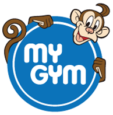Involve Your Toddler In Activities That Grow The Brain
From birth to three, a toddler’s brain produces more than a million neural connections each second. Rapidly creating the neurological foundation for skills that your child can acquire and use for the rest of her life. Remember, along with her genes, the experiences she will gain through brain-boosting toddler activities will determine the eventual wiring of her brain.
So the big question parents should ask themselves is, how do you plan to nurture the healthy development of the brain during this critical phase of early childhood? And what measures that you can take to start on a toddler’s cognitive development. You can start as early as when your baby is 6 months old. So don’t delay. The sooner you start the better it will be for your child.
Jump start the brain

A toddler waits for new experiences to shape the neural networks for learning a language, develop reasoning ability, gain problem solving skills, and acquire social values. By participating and creating your own Child Learning Programs, you can begin to involve your child in activities that stimulate brain growth and form new neural networks.
Jump-start your toddler’s brain development by engaging in games and fun activities by indulging in early childhood education at home. Playing, talking, eating, walking, reading, cuddling, singing – everything.
New sensory-stimulating activities and experiences create new connections and create pathways for imagination. More important to know however, is the fact that the networks that are stimulated more often become permanent, and those that are not used, fade away.
Remember to do lots of fun things with your child. Brain-boosting toddler activities and play establish strong bonding and create an environment in which learning can thrive. One other thing to note, do not rely on replacing the human and the emotional component essential for growth.
Shun all play-alone high-tech toys and video games, they do nothing but create flashing lights and make noisy sounds. And most important of all, keep the TV switched off in the presence of your child. These gadgets cannot, and will not replace the gentle love and care a mother or father can share with their child.
The following brain-boosting toddler activities will help your child build and grow new networks in her brain. While these activities are designed to nurture specific skills, each activity involves developing a combination of skills.
Start on problem solving early

Enrichment Classes stimulate curiosity and helps develop patience, as well as help your child acquire problem-solving skills. Exercise her basic cause-and-effect reasoning capability to achieve a goal, and help your child gain self-confidence.
Using Building Blocks: (One year old & above)
Begin by working on building simple patterns. Use 2 blocks, placing one above the other and then use three, setting them up in a row. Speaking playfully, ask your child to copy the pattern. Then let her create her own patterns. Show that you too are enjoying playing with her. As she becomes more adept in figuring out how to build block structures, make it a little more complex. Then let her take over and play all by herself.
Make thinking fun

Every time you play, it stimulates your child’s thinking. Creating a new neural pathway or strengthening an existing one. Play with puzzles, they challenge and involve reasoning, and help develop muscle control. Always do puzzles in a relaxed and loving atmosphere, it creates optimal learning experiences.
Creative paper puzzle (Two years & above)
Make a largish board using a thicker card paper. Draw different shapes on it, such as a square, circle, triangle and rectangle. Then cut out these shapes using different coloured paper. Ask your child to match the cut out shapes with the ones drawn on the board. This is simple and often very engrossing for the child as she will try out different shapes till she finds one that fits.
Learning about opposites

Draw pictures of things that are opposites such as big bear and small bear, girl and boy, toy horse and toy car, and so on. Stick these pictures on paper cards and explain to your child that she is going to learn the concept of something that is opposite. Mix them all up, and put them face down on a table. Pick one card and describe what it shows, “Here is something big, now where is something that’s smaller than this?”
Learning new words

Leveraging the brain’s ability to rewire itself, is what makes your child pick up a language faster. So talk to her as often as possible. The more words your child gets to hear, the more connections her brain makes. Learning to recognize new words and eventually understanding them.
Mirror, mirror… (one and half years old & above)
Ask your child to lie down next to you, and watch your reflections in a mirror. Make faces. Stick your tongue out, your child will surely begin to imitate you. Laugh. Talk. Point to your nose and say “mommy’s nose.” Do the same with other parts of your face. Your child will begin to follow your every move and try out the words. This teaches your child about body awareness and will assist her in seeing herself as separate from others. She will start to explore how she looks by using new words.
How to focus attention

Paying attention plays a big role in teaching a child to focus. It helps extend short attention spans into learning to focus for longer durations. This skill helps a child to complete a task, solve a problem and becomes essential in getting a hang of other forms of learning.
Tape removing exercise (Two years old & above)
Use paper tape and stick long strips of it on a flat surface, such as a table or the fridge door. Make sure to overlap the tape on the one next to it. First demonstrate how she can remove one tape at a time, using your fingernail. Showing how to do it just once will be enough for her to catch on. She will do it all by herself in a jiffy!
Imagination leads to creativity

To encourage abstract thinking and problem solving skills, you need to nurture your baby’s creativity and imagination. This will also help your child generate new thoughts and ideas as well.
Playing with sand (One and a half years old & above)
Go to the beach, or create a sand pit inside your homes. Sit down with her along with her toy kitchen utensils and teach her how to make sand molds using them. Show her how to make wavy lines, and draw circles. Extend the play time by building a sand tower or a castle. You will stimulate her creativity and actually build something she had imagined.
Growing up well-balanced

The more your child experiences gestures of nurturing, loving, and caring, the more she will feel safe. This also helps firmly establish the foundation for her emotional well-being. Bear in mind, it is these early experiences with you that teaches her how to feel and handle her feelings in a mature way. Helping her grow up to be socially well-adjusted.
Exercise the memory muscle

Effective learning makes your child remember things for a longer time. Makes experiences stick in her mind. Learning something new creates new synapses or reinforces older ones. It is like working a muscle. The earlier your child begins to exercises the brain, the easier it becomes for her to store and retrieve loads of information later in life.
Look at pictures for fun (One and a half year old & above)
Cut out images that are not familiar but will be of interest to your child — such as a doll, a giraffe or the starfish, build a decent collection. Stick them all on cards. Shuffle them up and pick one and show it to your child. Tell her about the object. Describe in detail, then put it back in the pack. Casually ask her to search for that picture and talk about it. This will stimulate your child’s visual memory, and helps in her language development. Have fun by turning it into a game.
All-round physical growth

When your toddler is involved in Physical activity not only exercises the muscles of the body but also enhances brain function by providing more oxygen to it. But that is not all, developing gross and fine motor skills, balance and eye-hand coordination play a critical role in tasks such as writing and in future athletic capabilities.
Blowing soap bubbles (one year old & above)
Toddlers find it exciting to chase and pop soap bubbles. It is not only fascinating but also a lot of fun. Let your toddler chase the bubbles that you make. Make big bubbles and smaller ones to make her see the difference.
Or you can roll a small ball towards her, asking her to roll it back to you. As she gains better control, increase the distance between you and her. Vary the game by bouncing it now and them.
Create an obstacle course at home
This is sure to be fun. Make a mini obstacle course in your living room. Use pillows and cushions of different sizes and colours. Stack some of them high, and others low. Ask your child to crawl or walk towards you by making her way through the stacked obstacles.
Both these games help your child to develop gross motor skill and help her improve focus and to concentrate for longer periods.
About My Gym
If you are wanting to know more about the ideal preschool enrichment program with a clear focus on early child development in Singapore, then My Gym is the place for you. My Gym keeps enrichment classes for toddlers fresh, engaging and entertaining. Focusing on creating unique, fun to participate learning experiences that make learning through play that much more fun and that much more effective.



